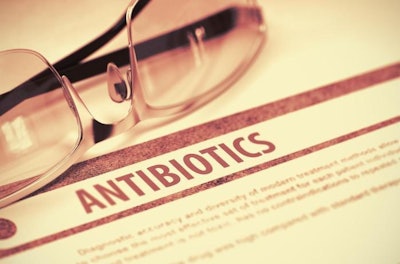
Sales of antibiotics for veterinary use, animal feed jump 9% in 2018, but cause of increase remains unclear
After three straight years of decline, the U.S Food and Drug Administration (FDA) reported last week that sales of antibiotics for use in livestock increased during 2018.
Overall sales increased 9%, according to the report, and use in livestock feed — prohibited without a Veterinary Feed Directive since 2017 — jumped 13% in 2018, with sales for use in cattle and swine driving the majority of the increase. Use for poultry declined 17%, continuing the three-year trend in that industry.
It’s not clear what, exactly, is driving the change. On its website, the FDA says the increase was not entirely unexpected, and should be considered in context; despite the increase, 2018 was still the second-lowest year on record for antibiotics sales, which are down 38% from a peak in 2015.
Recent actions by the FDA — such as the requiring prescriptions for medicated feed — “have fundamentally changed the way animal producers obtain and use medically important antimicrobials in food animals,” according to Anne Norris, a health communications specialist for the FDA. “The substantial reduction in the quantity of such drugs sold or distributed in 2017 was not something FDA expected to happen again in 2018.”
Norris said the FDA’s goal was not necessarily to reduce sales of antibiotics, but to optimize the way in which they are used.
Concern over lack of data
But some outside the FDA have expressed concern about the lack of data regarding how antibiotics are used after they are sold, which they say is making it difficult to determine whether the rebound is due to the establishment of a new normal, or other factors.
“One of the big challenges with this data is we don’t have enough granularity to understand what is driving the uptick, and understand what it means for FDA’s policies,” said Karin Hoelzer, a veterinarian and senior officer at Pew Charitable Trusts. An increase after several years of decrease is concerning, she said, particularly due to the relatively large increase in medicated feed sales and “because we don’t know what is driving it.”
Increased feed use is particularly problematic, Hoelzer said, because veterinarians often lack clear recommendations for how long antibiotics should be administered to food-producing animals. In the absence of clear recommendations, she said, food-producing animals may be administered antibiotics for up to five months at a time. Medicated feeds, which benefit from ease of use, may be used even longer than other forms of dosage.
This long-term use of antibiotics may contribute to rising antibiotic resistance, which can inhibit the efficacy of these drugs in subsequent uses. The fact that many key antibiotics, including penicillin, saw increased sales in 2018 was especially worrisome, according to Hoelzer.
The FDA has expressed intent to bring all antibiotics that remain available for over-the-counter use in livestock under veterinary oversight. However, the increased sale of antibiotics was largely driven by sales of medicated feed, according to the FDA’s report. Use in water-based applications, including drinking water or drenches, also increased. Sales of injectable, oral and topical antibiotics all continued to decline in 2018.













